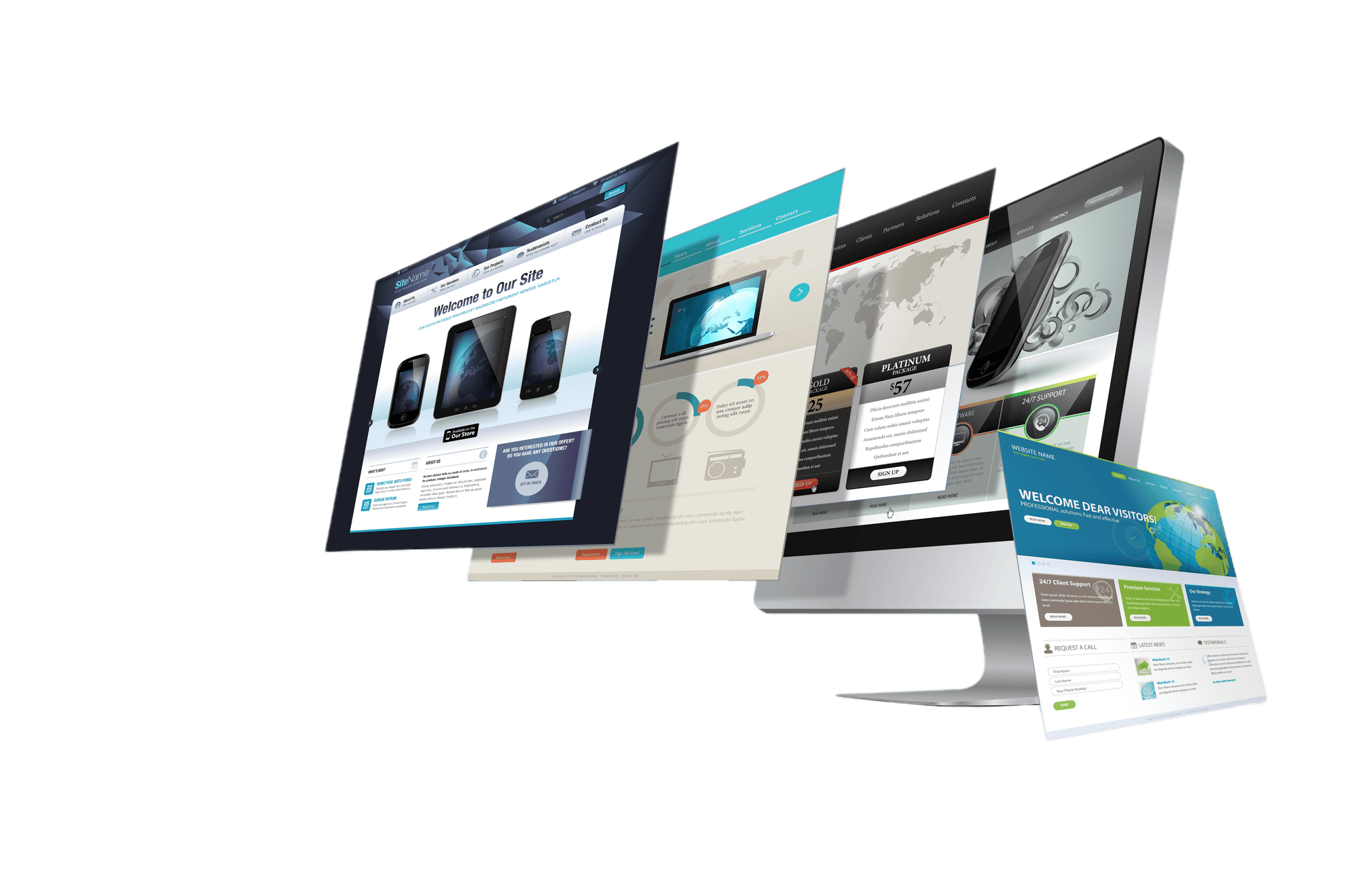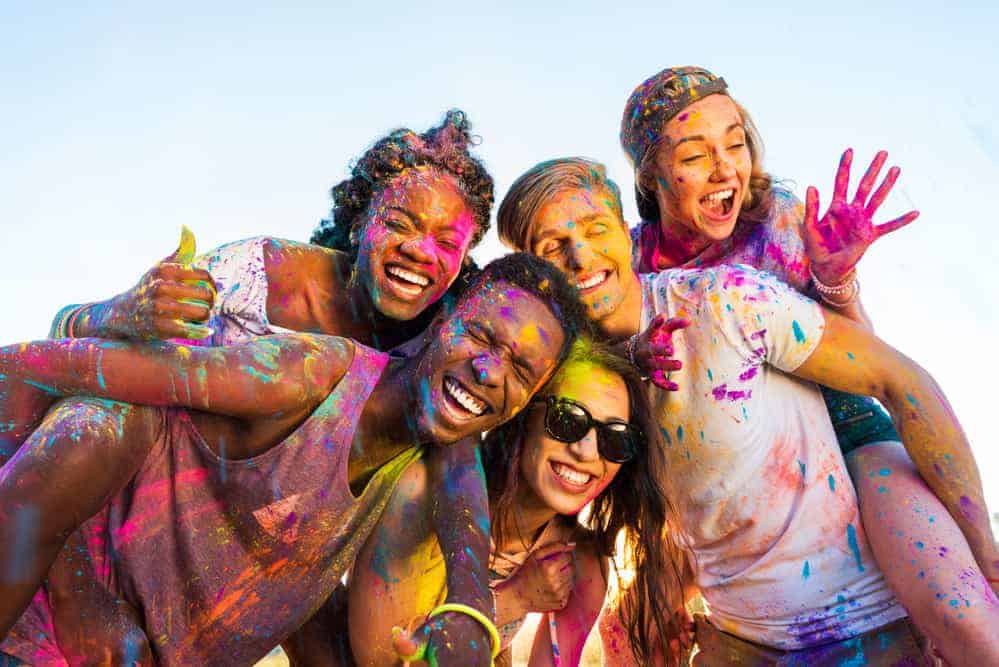How does the psychology of color in branding affect your business? You might not realize it, but color plays a vital role in our everyday purchasing decisions. Companies and organizations harness the power of color every day to reap dramatic increases in sales and drive positive brand associations. In many cases, customers cannot recognize that they’ve been persuaded by a product’s color as much as anything else.
Many of you may be unaware of the specific influence of each color when thinking about your branding. Thus, this article will give you a run-down, color-by-color, so you can make an informed decision when it comes to designing your website.
But before covering each color, it’s worth explaining why the psychology of color in branding is so important when it comes to your business website.
Why is the Psychology of Color in Branding So Important for Websites?
The psychology of color is a vital tool that successful businesses use all over the globe. From internal presentations to printed marketing materials such as brochures, the chosen colors have a tangible impact on the customers they are prepared for.
However, when talking about creating an excellent website design, the psychology of color in your branding takes on a heightened role. This is mainly because so much business is conducted online these days. Get your color choices correct, and you benefit from increased conversions and better sales. However, if you make incorrect choices, you could find yourself scratching your head, wondering what has gone wrong.
There are many examples whereby merely changing the color of a button can dramatically impact a company. For instance, one sizable European e-commerce site selling porcelain ran two identical marketing campaigns to equal numbers of visitors. The second time they ran it, they made one minuscule difference, they changed the color of the call-to-action (CTA) button. The result of the change was an astonishing 35.81% increase in conversions.
This is just one of the hundreds of examples demonstrating the power of the psychology of color in branding. The switch from a blue to green button instilled a much higher level of confidence and trust (associated with the color green) and better highlighted where customers were supposed to click to checkout against a white background.
As you can see, when it comes to designing a website for your Raleigh, NC-based business, you’re going to have to consider the color scheme you want to use. So without further ado, let’s give you a color-by-color run of the psychology associated with each major color.
The Psychology of the Color Red
Perhaps the most powerful color of them all when it comes to branding, red creates urgency and focuses minds. That’s why it’s popular with fast-food chains and when retail store sales always use red for these discount tags. It’s the color of love, passion, and romance. It’s also proven that sports teams wearing red uniforms win more often. An excellent choice for forcing people to take action.
The color red carries a range of psychological associations and can have a powerful impact on our emotions and behavior. Here are some additional aspects to consider when exploring the psychology of the color red:
- Passion and Energy: Red is often associated with intense emotions like passion, love, and desire. It can evoke feelings of excitement, enthusiasm, and energy. Red has the ability to grab attention and create a sense of urgency, making it an effective color choice for calls to action or promotional messages.
- Stimulation and Attention: Red is a highly stimulating color that can increase heart rate, blood pressure, and adrenaline levels. This physiological response makes red a popular choice in contexts where quick reactions and attention are desired, such as warning signs or emergency notifications.
- Strength and Power: Red is often linked to notions of strength, power, and dominance. It can convey a sense of authority and assertiveness. Red is frequently used in branding for industries like sports, technology, and automotive to evoke a sense of power and competitiveness.
- Importance and Prestige: Red has historically been associated with wealth, royalty, and luxury. It can symbolize importance, opulence, and exclusivity. Brands that aim to portray a sense of prestige or high value may incorporate red into their branding to create an aura of sophistication.
- Aggression and Danger: Red can also be associated with more negative emotions and connotations. Its intensity can evoke feelings of anger, aggression, or danger. In certain contexts, such as caution signs or alerts, red can be used to communicate potential risks or threats.
- Appetite and Food: Red is known to stimulate appetite and can be found in many food-related contexts. It is frequently used in restaurant branding or packaging to evoke hunger and excitement. Fast food chains often incorporate red into their logos and branding to create a sense of urgency and increase customer response.
- Cultural Variations: It’s important to note that the associations with red can vary across cultures. For example, in Western cultures, red is often associated with love and passion, while in some Eastern cultures, it symbolizes luck and prosperity. Understanding cultural nuances is essential when considering the use of red in branding for global audiences.
The Psychology of the Color Orange
Orange is a vibrant color associated with enthusiasm, creativity, and warmth. It can create a sense of excitement and draw attention. Orange can also stimulate appetite and is often used in food-related industries.
- Energy and Enthusiasm: Orange is a vibrant and energetic color that exudes enthusiasm, excitement, and warmth. It can stimulate positive emotions and create a sense of vitality. Orange is often associated with high energy levels and can be used to evoke feelings of motivation and enthusiasm. Brands or websites related to sports, adventure, or activities that require energy and action may incorporate orange to convey a sense of dynamism.
- Creativity and Expression: Orange is often associated with creativity, originality, and self-expression. It can inspire innovative thinking and stimulate the imagination. Orange is commonly used in branding for artistic endeavors, design studios, or creative industries. It can create a sense of playfulness and encourage out-of-the-box ideas.
- Sociability and Warmth: Orange is a warm and sociable color that can create a welcoming and friendly atmosphere. It can evoke feelings of warmth, approachability, and open-mindedness. Orange is often used in branding for social gatherings, community events, or hospitality industries. It can create a sense of conviviality and encourage social interaction.
- Optimism and Positivity: Orange is often associated with optimism, positivity, and a sunny outlook on life. It can uplift the mood and create a cheerful atmosphere. Orange is commonly used in branding or websites aiming to convey positivity, happiness, or a zest for life. It can evoke a sense of optimism and brightness.
- Attention-Grabbing and Confidence: Orange is a bold and attention-grabbing color that can command attention and create a strong visual impact. It can signify confidence and assertiveness. Orange is often used strategically in branding or marketing materials to draw attention to specific elements or messages. It can create a sense of excitement and make a brand or website memorable.
- Adventure and Fun: Orange is often associated with adventure, fun, and a sense of spontaneity. It can evoke feelings of excitement and thrill. Orange is commonly used in branding or websites related to outdoor activities, travel, or experiences that involve exploration and adventure. It can create a sense of exhilaration and capture the spirit of discovery.
- Balance and Harmony: Orange is a color that combines the energy of red and the happiness of yellow. It can represent a balance between these two extremes. Orange can create a sense of harmony and emotional balance. It is often used in wellness-related branding or websites that aim to promote holistic well-being and inner harmony.
The Psychology of the Color Yellow
This may surprise you, but yellow is one of the least frequently used colors in branding. That’s because, despite being considered a cheerful color, too much exposure causes feelings of anxiety, stress, and fear. This is why warning labels are often yellow. However, the advantage of these psychological traits is that yellow can grab attention better than many other colors.
Let’s delve into the psychology of the color yellow and explore its various associations and effects:
- Happiness and Optimism: Yellow is often associated with feelings of happiness, cheerfulness, and positivity. It has the power to evoke a sense of joy and can create an uplifting and optimistic atmosphere. Yellow can be used to instill a sense of warmth and enthusiasm, making it an ideal choice for brands or websites aiming to convey a friendly and approachable image.
- Energy and Attention-Grabbing: Yellow is a highly visible and attention-grabbing color. It has a high level of visibility, which is why it is often used in caution signs or warning labels. In branding and design, yellow can be effective in drawing attention to specific elements or calls to action. It can stimulate mental activity and encourage engagement.
- Creativity and Innovation: Yellow is associated with creativity, originality, and innovation. It can spark imagination and inspire fresh ideas. Yellow can be utilized to create an environment that encourages thinking outside the box and promotes a sense of innovation.
- Communication and Positivity: Yellow is considered a color that promotes effective communication. It can enhance clarity and mental agility, making it an appropriate choice for websites or brands focused on education, learning, or communication. Yellow can help create a positive and engaging user experience.
- Caution and Cautionary Associations: While yellow is often associated with positivity, it can also have cautionary connotations. In some contexts, yellow is used to indicate caution or warning. For example, yellow caution signs are commonly seen in road safety or construction areas. This dual nature of yellow should be considered when using it in branding or design, as it can evoke different responses depending on the context.
- Playfulness and Youthfulness: Yellow is frequently associated with playfulness, youthfulness, and childlike qualities. Its brightness and vibrancy can create a fun and energetic atmosphere. Brands targeting younger audiences or those seeking to convey a sense of lightheartedness often incorporate yellow into their visual identity.
- Cultural Symbolism: Yellow holds varying cultural meanings and associations. In some cultures, yellow symbolizes happiness and good fortune, while in others, it may have different interpretations. Understanding the cultural context of the target audience is crucial when incorporating yellow into branding efforts.
The Psychology of the Color Green
Unsurprisingly, green is associated with nature, health, growth, and harmony. It’s also an incredibly restful and relaxing color that promotes a feeling of safety. This is a perfect color choice for your website if your products or services relate to healthcare, the environment, or general wellness.
Let’s explore the psychology of the color green and its various associations:
- Nature and Growth: Green is strongly associated with nature, symbolizing growth, renewal, and fertility. It is the color of plants and represents the vitality and freshness of the natural world. Green can create a sense of harmony, balance, and connection to the environment. Brands or websites associated with eco-friendly products, sustainability, or outdoor activities often incorporate green to convey a sense of environmental consciousness.
- Calmness and Relaxation: Green has a calming and soothing effect on our emotions. It is often associated with serenity, tranquility, and a sense of peace. Green can help reduce stress and create a restful environment. Websites related to wellness, meditation, or relaxation often utilize shades of green to evoke a sense of calmness and balance.
- Health and Vitality: Green is often associated with health, well-being, and vitality. It can symbolize freshness, rejuvenation, and a positive state of mind. Green is commonly used in the branding of health-related products, organic foods, and lifestyle brands focused on holistic wellness. It can also be associated with growth and abundance.
- Harmony and Balance: Green represents balance and harmony between different elements. It can foster a sense of equilibrium and stability. Green is often used to create a harmonious visual composition and evoke feelings of order and organization. Brands promoting balance, harmony, or natural remedies may choose green as a primary or complementary color.
- Prosperity and Wealth: Green has associations with prosperity, abundance, and financial success. In some cultures, green is linked to good luck and prosperity. It can be used in branding to convey a sense of wealth, luxury, and affluence. Finance-related companies or brands emphasizing prosperity may incorporate green into their visual identity.
- Freshness and Youthfulness: Green is often perceived as youthful and energetic. It can evoke feelings of vibrancy, playfulness, and optimism. Brands targeting younger audiences or those seeking to convey a sense of youthfulness and innovation may incorporate shades of green to create a dynamic and lively impression.
- Environmental Awareness: Green is strongly associated with environmental awareness and sustainability. It is commonly used to signify eco-friendly practices, renewable energy, and ethical choices. Green can represent a commitment to preserving the planet and resonate with individuals who prioritize environmentally conscious lifestyles.
The Psychology of the Color Blue
The epitome of a masculine color, blue resonates particularly well with men, which is why many shaving and grooming products have blue packaging. Other psychological associations include security, stability, reliability, and trust. That’s why it’s the color of choice for many banks, security companies, and investment firms too.
Let’s explore the psychology of the color blue and its various associations:
- Calmness and Serenity: Blue is often associated with calmness, tranquility, and serenity. It has a soothing effect on our emotions and can create a sense of relaxation and peace. Blue is frequently used in environments where a sense of calm is desired, such as bedrooms, spas, or meditation spaces. Websites or brands related to wellness, mental health, or stress reduction often incorporate shades of blue to evoke a serene atmosphere.
- Trust and Reliability: Blue is often perceived as a color that conveys trust, reliability, and credibility. It is commonly associated with professionalism, integrity, and dependability. Many corporate brands, financial institutions, and technology companies incorporate blue into their branding to establish a sense of trustworthiness and competence.
- Intelligence and Logic: Blue is linked to intelligence, logic, and clear thinking. It can enhance mental clarity, focus, and concentration. Blue is often used in educational settings, where a calm and attentive mindset is important. It can also be utilized in websites or brands related to problem-solving, consulting, or professional services that require analytical thinking.
- Communication and Openness: Blue is known to facilitate effective communication and promote open dialogue. It can create an atmosphere of approachability, openness, and sincerity. Brands or websites aiming to foster trust, collaboration, or community often utilize shades of blue to convey a sense of accessibility and friendliness.
- Stability and Dependability: Blue is associated with stability, reliability, and a sense of order. It can represent structure and dependability, creating a perception of security and confidence. Blue is often used in industries such as finance, insurance, or law to convey a sense of stability and trustworthiness.
- Coolness and Refreshment: Blue is a cool color that is often associated with feelings of refreshment and invigoration. It can create a sense of coolness, especially when paired with lighter shades or incorporated in water-related imagery. Brands or websites related to beverages, spas, or travel destinations may use shades of blue to evoke a refreshing and rejuvenating experience.
- Masculinity and Professionalism: Blue is often associated with masculinity, authority, and professionalism. It is a color commonly used to represent traditional gender roles and is often preferred in branding targeting male audiences. Blue can create a sense of formality and is frequently used in corporate settings or professional services.
The Psychology of the Color Pink
Pink is commonly associated with femininity, tenderness, and romance. It can evoke feelings of sweetness and playfulness. Lighter shades of pink can have a calming effect, while brighter shades can be more energetic.
- Femininity and Romance: Pink is often associated with femininity, gentleness, and romance. It can evoke feelings of sweetness, tenderness, and affection. Pink is commonly used in branding or websites targeting a female audience or products and services related to beauty, fashion, or romance. It can create a sense of charm and create an emotional connection.
- Playfulness and Youthfulness: Pink is a color that is often associated with playfulness, youthfulness, and innocence. It can evoke a sense of childlike wonder and carefree joy. Pink is frequently used in branding or websites targeting children or those seeking a lighthearted and playful experience. It can create an atmosphere of fun and whimsy.
- Nurturing and Compassion: Pink is often linked to nurturing, compassion, and empathy. It can evoke feelings of warmth, kindness, and understanding. Pink is commonly used in branding or websites related to healthcare, counseling, or support services. It can create a sense of comfort and convey a caring and nurturing approach.
- Sensitivity and Sensuality: Pink can be associated with sensitivity and sensuality. It can evoke a sense of subtlety and delicacy. Lighter shades of pink can create a soft and gentle atmosphere, while deeper shades can evoke a sense of passion and intimacy. Pink is often used in branding or websites related to personal relationships, self-care, or intimate products.
- Positivity and Optimism: Pink can symbolize positivity, optimism, and happiness. It can uplift the mood and create a cheerful and positive atmosphere. Pink is often used in branding or websites aiming to convey joy, optimism, or a lighthearted approach. It can create a sense of optimism and bring a touch of brightness.
- Uniqueness and Individuality: Pink is sometimes associated with uniqueness, individuality, and self-expression. It can represent a departure from traditional gender norms and be used to challenge societal expectations. Pink is often used in branding or websites targeting alternative or non-conforming audiences, celebrating diversity and personal expression.
- Calm and Balance: Soft shades of pink, such as pastel pink, can create a sense of calmness and tranquility. It can promote a peaceful and soothing environment. Pink is commonly used in branding or websites related to wellness, relaxation, or mindfulness practices. It can evoke a sense of balance and serenity.
The Psychology of the Color Purple
Sitting at the cross-section of red and blue, purple can be viewed as both masculine and feminine, depending on the specific shade. In many instances, this color conveys wealth, wisdom, and luxury. It’s commonly used in beauty and anti-aging products as well as more spiritual and other-worldly products and services.
Let’s explore the psychology of the color purple and its various associations:
- Royalty and Luxury: Purple has long been associated with royalty, power, and luxury. Historically, purple dyes were expensive to produce, making them accessible only to the elite. As a result, purple became symbolic of wealth, opulence, and extravagance. Brands or websites aiming to convey a sense of sophistication, exclusivity, or high-end products often incorporate purple into their visual identity.
- Creativity and Imagination: Purple is often linked to creativity, artistic expression, and imagination. It can inspire originality and innovative thinking. Purple can create a sense of inspiration and stimulate the imagination, making it a suitable choice for brands or websites related to the arts, design, or creative industries.
- Spirituality and Mystery: Purple has connections to spirituality, mysticism, and the realm of the unknown. It can evoke a sense of mystery, depth, and introspection. Purple is often used in branding for spiritual or holistic practices, as well as in industries related to astrology, tarot, or psychic services. It can create an atmosphere that encourages introspection and spiritual exploration.
- Calmness and Tranquility: Lighter shades of purple, such as lavender, can have a calming effect on emotions. They can create a sense of tranquility, relaxation, and peace. Soft purples can be used to establish a serene and gentle atmosphere in websites or brands related to wellness, self-care, or meditation.
- Femininity and Romance: Purple, especially softer shades like lavender or lilac, is often associated with femininity, grace, and romance. It can evoke a sense of elegance and gentleness. Brands targeting female audiences or those seeking to convey a sense of romance, beauty, or delicacy may incorporate purple into their visual identity.
- Individuality and Uniqueness: Purple is often associated with individuality, eccentricity, and non-conformity. It can represent uniqueness and a willingness to stand out from the crowd. Purple can be used to create a brand or website that appeals to unconventional or alternative audiences, celebrating diversity and personal expression.
- Wisdom and Spirit: Purple is sometimes associated with wisdom, introspection, and spirituality. It can represent a connection to higher consciousness and a quest for knowledge and understanding. In certain contexts, purple can symbolize wisdom and the pursuit of enlightenment.
The Psychology of the Color White
The psychology of the color white is best-defined by feelings of purity, cleanliness, and safety. An essential color in web design, white space on a website helps increase the ease at which content can be read. It also highlights brightly-colored CTAs, and it keeps shapes, logos, and other crucial design features easily-distinguishable and well-defined.
Let’s explore the psychology of the color white and its various associations:
- Purity and Innocence: White is often associated with purity, innocence, and cleanliness. It represents a blank canvas or a fresh start. White can create a sense of simplicity and minimalism. It is commonly used in healthcare settings, where cleanliness and sterility are essential, as well as in branding for products associated with hygiene or cleanliness.
- Simplicity and Clarity: White is a color that is often associated with simplicity, clarity, and efficiency. It has a clean and uncluttered appearance, making it a popular choice for minimalist designs. White can create a sense of order and organization, as it provides a neutral backdrop that allows other elements to stand out.
- Peace and Tranquility: White is often perceived as a peaceful and tranquil color. It can create a sense of calmness and spaciousness. White is commonly used in environments where relaxation and serenity are desired, such as spas or bedrooms. It can evoke a sense of tranquility and balance.
- Timelessness and Classicism: White is often associated with timelessness, elegance, and classicism. It can create a sense of sophistication and refinement. White is frequently used in formal settings or in branding for luxury products. It can evoke a sense of high quality and exclusivity.
- Cleanliness and Hygiene: White is often associated with cleanliness, sterility, and hygiene. It can convey a sense of cleanliness and purity, making it a popular choice in medical and healthcare industries. White is also commonly used in the food and beverage industry to signify freshness and cleanliness.
- Openness and Space: White can create a sense of openness and spaciousness. It can make a space feel larger and more airy. White is often used in interior design to maximize the perception of space and light. In website design, white backgrounds can provide a clean and uncluttered look, allowing content to stand out.
- Modernity and Minimalism: White is often associated with modernity and minimalism. It is a popular choice in contemporary design, where clean lines and simplicity are emphasized. White can create a sleek and sophisticated aesthetic, especially when paired with other minimalist design elements.
The Psychology of the Color Black
At the opposite end of the color spectrum, black invokes a sense of power, sophistication, authority, strength, and stability. Of course, it can also convey grief and mourning, given its association with death. Villains also frequently wear black. In most cases, it’s best to pair black with white to offer balance against these possible negative psychological overtones.
Let’s explore the psychology of the color black and its various associations:
- Sophistication and Elegance: Black is often associated with sophistication, elegance, and formality. It is a timeless color that can create a sense of style and class. Black is commonly used in luxury branding and high-end fashion to convey a sense of exclusivity and refinement.
- Power and Authority: Black is often associated with power, authority, and strength. It can create a sense of seriousness and assertiveness. Black is commonly used in corporate branding to convey a sense of professionalism and confidence. It can also be associated with leadership and control.
- Mystery and Intrigue: Black has a mysterious and intriguing quality. It can evoke a sense of the unknown, darkness, and secrecy. Black can be used to create an atmosphere of suspense and allure. It is often used in branding for products or services related to the entertainment industry, such as movies or nightlife venues.
- Timelessness and Classicism: Black is often perceived as a timeless color that never goes out of style. It is associated with tradition and classicism. Black can create a sense of permanence and longevity. It is frequently used in formal events, such as black-tie affairs or prestigious ceremonies.
- Formality and Luxury: Black is a color that represents formality and luxury. It can create a sense of exclusivity and high value. Black is commonly used in branding for premium products or services. It can evoke a sense of rarity and desirability.
- Strength and Resilience: Black can symbolize strength, resilience, and endurance. It can convey a sense of determination and authority. Black is often associated with power and can be used in branding or design to create a strong and impactful impression.
- Minimalism and Contrast: Black is often used in design to create contrast and highlight other elements. It can provide a striking contrast against other colors, making them stand out. Black is frequently used in minimalist design to create a sleek and modern aesthetic.
Final Thoughts
As a business owner, you should never ignore the psychology of color in branding. It’s important to remember that these associations can vary depending on cultural and personal experiences, so it’s crucial to consider the context and target audience when applying colors in branding. Remember, in many ways your whole online brand identity will be defined by the colors you use for your website’s design. Your chosen colors can also dramatically impact other aspects such as conversions and how long a visitor spends on your site (known as dwell time). That’s why it makes sense to consult the help of experts such as Faith Web Designers when making your choices.
So, if you’re new to the world of web design in Raleigh, NC, then don’t hesitate to reach out to Faith Web Designers to receive detailed advice concerning the implications of the branding color choices you’re thinking of making for your website.






1 comment
James Dia
AmazIng article. Helps us decide what colors to use for branding of our company.